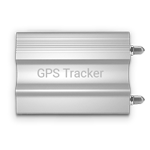| serial_number |
Unique identifier of the tracker |
|
| counter |
Counts the messages sent by the device from 1 to 4294967295. After reaching 4294967295, the counter resets to 1 |
|
| nickname |
Name assigned to the device (up to 10 characters) |
|
| rssi |
Received signal strength, ranging from 0 to 31, where 99 indicates no signal. |
|
| hdop |
Quality of horizontal location provided by GNSS, with lower values indicating greater accuracy |
|
| ignition |
Vehicle ignition status, 1 for on and 0 for off. |
|
| backup |
Indicates whether the data was sent successfully (0) or whether it failed and was stored for retransmission (1) |
|
| engine_hour |
The total engine running time in hours. |
|
| odometer |
The total distance traveled by the vehicle in km. |
|
| event_id |
The unique identifier of each event. This code is used to specifically identify the type of event that occurred |
|
| event_status |
Indicates the possible states in which the event can be recorded. |
|
| event_name |
Indicates whether there is any additional information associated with the event. This field is especially useful for events that require additional data, such as driver or passenger identification, which is stored in the 'name' field. It is only sent for certain types of event, as described in Table 4 in the documentation. |
|
| vin_voltage |
Voltages in mV of the tracker power supply |
|
| int_pwr |
Voltages in mV of the internal battery |
|
| operator |
Name of the telephone operator, transmitting only the first four characters to save data |
|
| cell_tech |
Type of the last network technology to which the tracker connected, represented numerically |
|
| shipping_tm |
Date and time of data sending |
|
| gnss_fix |
GNSS connection status, indicating whether the signal is available and its type |
|
| io_status |
Represents the operational status of each Input/Output (I/O) pin on the device. States are coded as '1' for 'on' and '0' for 'off'. This includes pins such as post-switch, power down, input 2 and output 2, allowing detailed monitoring of the relevant hardware activity. See Table 2 in the documentation for more details |
|
| can_odometer |
Measures the total distance traveled by the vehicle, in kilometers |
km |
| can_engine_hour |
Records the total operating time of the vehicle's engine in hours |
hours |
| can_speed |
Measures the vehicle's current speed in km/h |
km/h |
| can_rpm |
MeasuRecords the revolutions per minute of the vehicle's engine |
|
| can_on_off |
The status of a CAN system parameter. Parameters include parking brake, brake, clutch, air conditioning, seat belt and windshield wiper. A bit of '1' means that the parameter is on or activated, while a bit of '0' means that it is off or not used. For more details see Table 6 in the documentation. |
|
| can_accel_pedal |
Indicates the percentage of pressure applied to the accelerator pedal from 0 to 100 |
|
| can_fuel_level_unit |
Indicates the unit of measurement for the fuel level (L or %) |
|
| can_fuel_level |
Indicates the current fuel level in the vehicle's tank in % or L |
|
| can_range |
Estimates the distance the vehicle can travel with the remaining fuel, in kilometers |
km |
| can_fuel_consumption_unit |
Indicates the unit of measurement for fuel consumption: L/h (H) or km/L (K) |
|
| can_fuel_consumption |
Measures the vehicle's fuel consumption rate in L/h (H) or km/L (K). |
|
| can_fuel_used |
Quantifies the total fuel used by the vehicle throughout its useful life, in liters |
L |
| can_oil_temp |
Records the engine oil temperature in degrees Celsius |
degrees Celsius |















